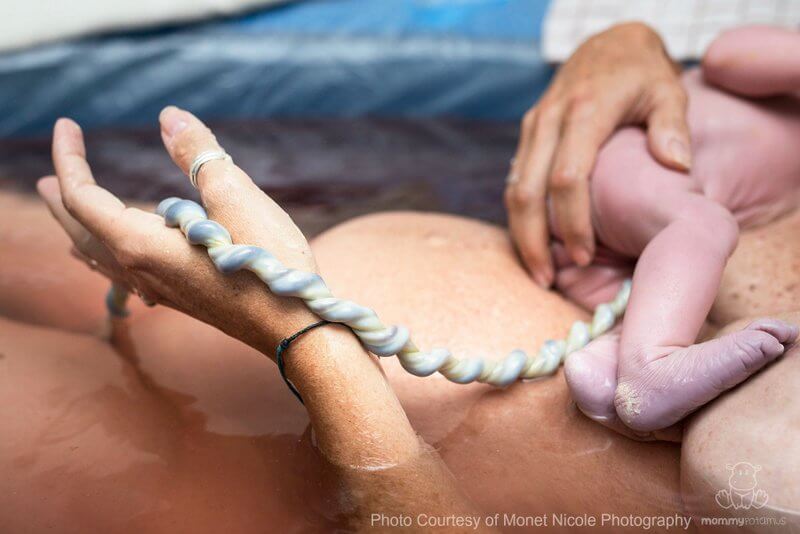
Among the many decisions expectant parents aiming for a gentle and natural childbirth make like choosing a midwife, packing a natural labor bag, and which birth interventions to refuse is the decision about cutting the cord. This post is jam packed with valuable information about the benefits of delayed cord clamping and how you can request it.
“Cut The Cord
Before it was a catch phrase used to describe ditching cable companies and cutting off allowances, it was a moment. A touch point in every single one of our lives.
After baby is born we usually think of the umbilical cord as a relic – part a life support system that is no longer needed. But the reality is that the cord has one last job to do, and it’s a big one.
You see, the cord and placenta are a sort of external circulation system: one vein carries oxygen and nutrient-rich blood from the placenta to the baby, and two arteries carry carbon dioxide rich blood and waste away from baby to the placenta for purification. (source 1, source 2) When baby is born, about 1/3 of its blood is in the external part of the circulation system, but quickly makes it’s way to the baby via the umbilical cord. Unless of course, the cord is cut before the transfer is complete.
Why cut the cord early?
Great question. Early cord clamping became standard practice in the 1960’s because it was believed to reduce the likelihood of postpartum maternal hemorrhage. Later research revealed that it does not reduce hemorrhaging or offer any other clear benefit, but the practice continued anyway. (source)
The reluctance to change, which doctors said in this poll is due to “Difficulty with implementation in clinical practice,” – yes, really – has been frustrating for many birth advocates, especially in light of a growing number of studies suggest that delayed cord clamping has compelling benefits. We’ll cover the top five today, but first . . .
What is delayed cord clamping?
It depends on who you ask. According to the World Health Organization, delayed clamping is when the cord is cut 1-3 minutes after birth – a practice they recommend for all births. (source)
However, some practitioners think the one minute mark is too early, and recommend extending the time to approximately three minutes. In this statement, the Royal College of Midwives says that “delaying for even one minute is a welcome change . . providing all babies with one minute of transition from inter-uterine to extra-uterine life. However as transfusion is known to continue during the first 3-5 minutes of life, it is suggested that this process is allowed to complete without being interrupted.”
And then there’s the perspective expressed by the International Childbirth Education Association, which is that “Delayed cord clamping (DCC) is a practice by which the umbilical cord is not clamped or cut until after it stops pulsating. It may also include not clamping or cutting the umbilical cord until after the placenta is delivered.” (source)
So what do they agree on? Why, that delaying is worthwhile, of course!”



Leave a Reply